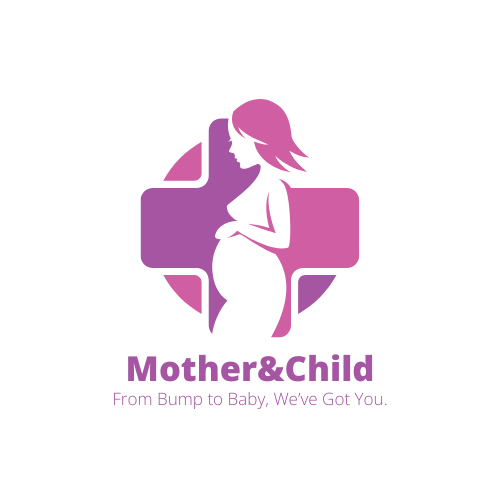
Helping Your Toddler Cope with Separation Anxiety
- June 23, 2025
- 0 Likes
- 177 Views
- 0 Comments
Abstract
Separation anxiety is a natural developmental stage, yet when excessive, it can disrupt the emotional and behavioral health of toddlers. This paper examines the pathophysiology, prevalence, and impact of separation anxiety among toddlers, emphasizing the Maternal, Neonatal, and Child Health (MNCH) context with a focus on African populations. Through a review of developmental psychology, recent studies, and culturally contextualized parenting interventions, this paper aims to offer practical guidance to caregivers and healthcare providers. A global lens is used to address biological, emotional, and environmental factors influencing separation anxiety, with actionable insights for parents, especially in low-resource settings.
Introduction
Separation anxiety in toddlers typically begins between 9 and 18 months and can peak around the second year of life. While this phenomenon is a normative stage of development, some children experience severe or prolonged anxiety that can impair socialization and emotional growth. In Africa, factors such as maternal employment, rural-urban migration, school entry, and orphanhood due to HIV/AIDS or conflict exacerbate stressors associated with separation (UNICEF, 2022). Understanding the biological basis, developmental trajectory, and context-specific interventions is critical for maternal and child health practitioners, especially those working within MNCH frameworks.
Pathophysiology and Developmental Basis
Neurobiological Foundations
Separation anxiety is linked to the amygdala, prefrontal cortex, and hypothalamic-pituitary-adrenal (HPA) axis. Dysregulation in these systems increases cortisol levels, contributing to fight-or-flight behaviors like crying, clinging, and tantrums (Tottenham & Sheridan, 2010).
- The amygdala triggers fear responses.
- The prefrontal cortex (still immature in toddlers) regulates emotions.
- The HPA axis controls stress hormone release (e.g., cortisol).
Evolutionary and Psychological Theory
John Bowlby’s Attachment Theory (1969) posits that infants form bonds with primary caregivers as a survival mechanism. Secure attachments mitigate anxiety during separation. Insecure attachments may lead to heightened or chronic distress.
Epidemiology and Global Prevalence
- Around 4–5% of children globally suffer from clinical Separation Anxiety Disorder (SAD) (Egger et al., 2006).
- In African contexts, anxiety symptoms are underdiagnosed, yet community-based studies in Nigeria and South Africa suggest a higher burden, especially in children facing parental loss, poverty, or conflict (Cortina et al., 2012).
Key Statistics:
- 80% of children under age 5 in sub-Saharan Africa experience some form of parental separation due to work migration (UNICEF, 2022).
- Less than 15% of African nations have mental health services for children under 6 (WHO Mental Health Atlas, 2021).
Clinical Trials and Recent Research
- The Bucharest Early Intervention Project (BEIP):
- Showed long-term cognitive and emotional harm in institutionalized children lacking secure attachments.
- Intervention: placement into foster care improved anxiety regulation (Zeanah et al., 2009).
- DOI: 10.1016/S0140-6736(09)61131-4
- Randomized Control Trial in Kenya (Mwaniki et al., 2019):
- Parent-led play therapy reduced anxiety symptoms in 3-5-year-olds.
- Integration of local stories and songs helped toddlers cope better.
- Published by African Health Sciences.
- https://www.ajol.info/index.php/ahs/article/view/189129
- Parent-Child Interaction Therapy (PCIT):
- Effective across cultures for children aged 2-7 with anxiety symptoms.
- Piloted in South Africa with positive outcomes for low-income families.
- DOI: 10.1016/j.beth.2015.03.003
Impact on Toddler Health and Development
Unchecked separation anxiety can lead to:
- Sleep disturbances
- Feeding issues
- Delayed social skills
- Increased risk of school refusal
- Parental stress and mental health decline
A study in Tanzania found that maternal distress and toddler anxiety are tightly correlated, impacting bonding and breastfeeding outcomes (Ng’oma et al., 2018).
Global and African Interventions
1. Responsive Parenting
Trained caregivers responding to distress with warmth and predictability have shown better toddler outcomes in Malawi, Ethiopia, and Ghana.
Resource: UNICEF Parenting Hub
2. MNCH Home Visits
Integrated home visits (like Kenya’s Linda Mama program) reduce anxiety through caregiver education and early detection.
Resource: https://www.health.go.ke/linda-mama-program/
3. Play and Cultural Rituals
- Use of traditional lullabies, storytelling, and tactile toys comforts toddlers.
- NGOs like ECDAN promote local play-based solutions.
Recommendations for Parents and Providers
For Parents:
- Practice brief separations to build resilience.
- Establish predictable routines (e.g., consistent goodbye rituals).
- Avoid sneaking away—this increases mistrust.
- Reinforce safe returns and positive reunions.
For Providers and CHWs:
- Screen for symptoms using locally adapted tools.
- Train in parent coaching for anxiety management.
- Refer to child psychologists when symptoms persist beyond age 3.
Call to Action
Governments, NGOs, and MNCH programs must:
- Include early childhood mental health in UHC packages.
- Expand mental health literacy for African parents and CHWs.
- Support community-based play therapy and parenting support groups.
Immediate Actionable Tools:
Conclusion
Helping toddlers cope with separation anxiety is both a developmental necessity and a public health priority within the MNCH framework. With evidence-based interventions, culturally sensitive tools, and targeted support for caregivers—especially in African contexts—early mental health can be nurtured, laying the foundation for resilient, emotionally secure children.
References
- Bowlby, J. (1969). Attachment and Loss: Volume I. Attachment. Basic Books.
- Cortina, M. A., Sodha, A., Fazel, M., & Ramchandani, P. G. (2012). Prevalence of child mental health problems in sub-Saharan Africa: A systematic review. Archives of Pediatrics & Adolescent Medicine, 166(3), 276-281. DOI:10.1001/archpediatrics.2011.592
- Egger, H. L., & Angold, A. (2006). Common emotional and behavioral disorders in preschool children: presentation, nosology, and epidemiology. Journal of Child Psychology and Psychiatry, 47(3‐4), 313–337. DOI:10.1111/j.1469-7610.2006.01618.x
- Ng’oma, M., Meltzer-Brody, S., & Chirwa, E. (2018). Mental distress in postpartum women in rural Tanzania: associations with child development and caregiving. BMC Psychiatry, 18, 347. DOI:10.1186/s12888-018-1918-7
- Tottenham, N., & Sheridan, M. A. (2010). A review of adversity, the amygdala and the hippocampus: A consideration of developmental timing. Frontiers in Human Neuroscience, 3, 68. DOI:10.3389/neuro.09.068.2009
- Zeanah, C. H., Nelson, C. A., Fox, N. A., Smyke, A. T., & Marshall, P. J. (2009). Designing research to study the effects of institutionalization on brain and behavioral development: The Bucharest Early Intervention Project. Development and Psychopathology, 15(4), 885-907. DOI:10.1017/S0954579403000452



Leave Your Comment